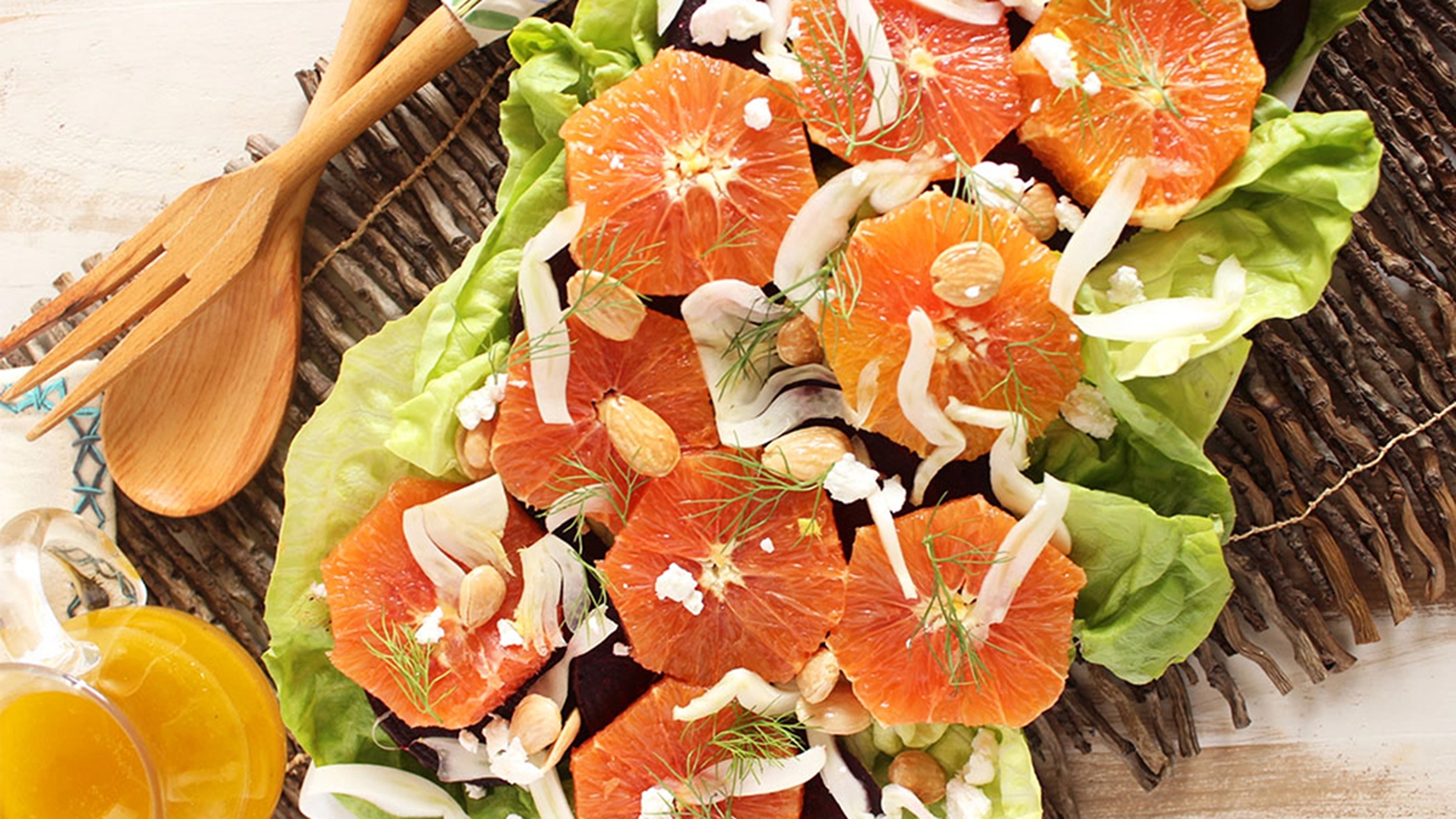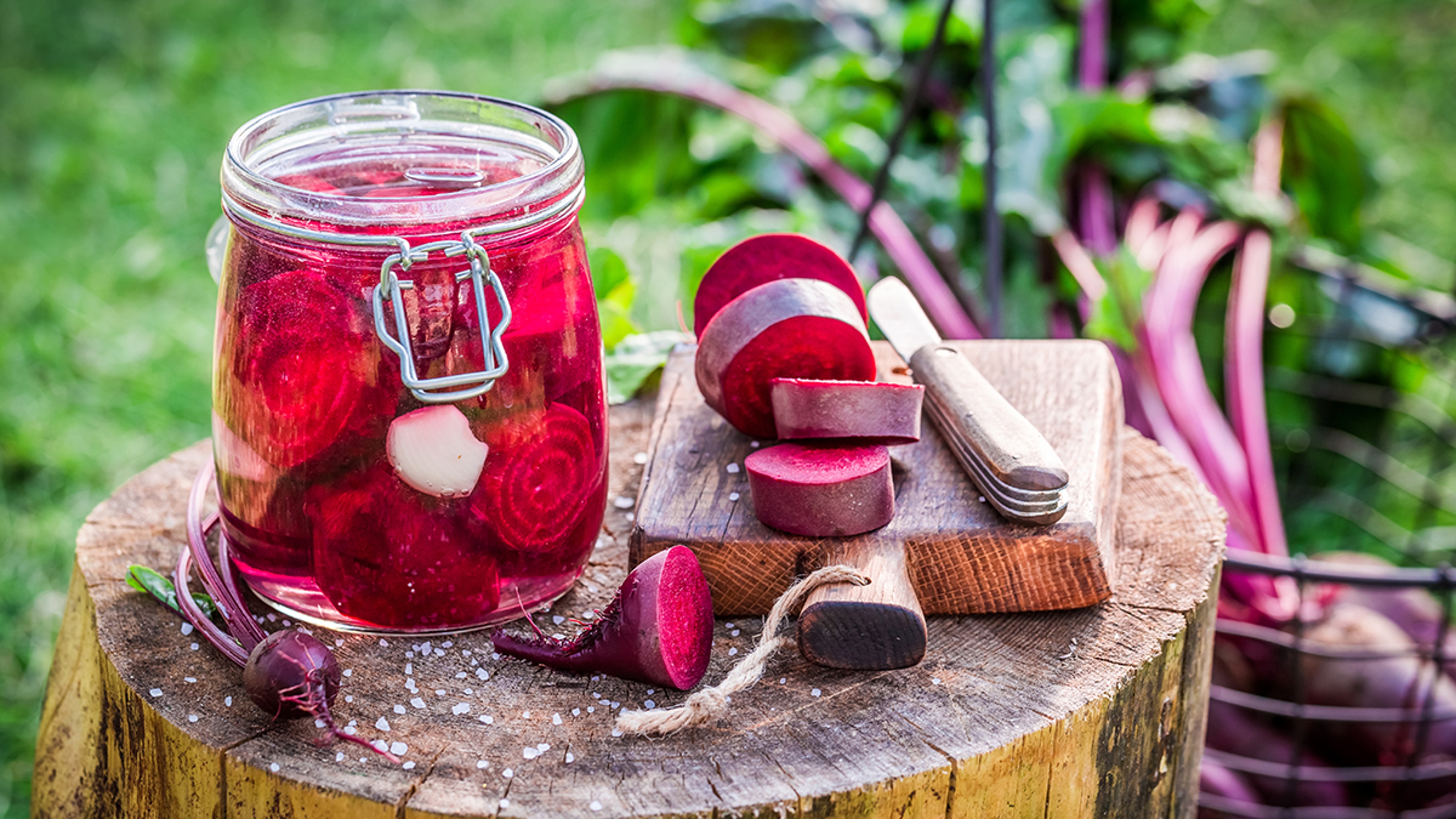December's Veg of the Month: Candy Cane Beets
Farmer Lee Jones says they are simple to make and we should get them on our table. We can't argue with that.
Dec 03, 2023
If you've long associated beets with the golf-ball-sized, pickled, blood-red varietal sold in grocery stores, you're not alone. "When we have dinners at The Culinary Vegetable Institute (the educational, events, and research facility located on The Chef's Garden farm), I've seen adults come to tears eating our beets; they only have ever eaten gnarly canned ones as a kid," recounts Farmer Lee Jones.
While Farmer Lee loves the eye-catching Golden, Badger Flame, and White beet varietals, he has a particular soft spot for his Candy Cane beets, a milder, sweeter varietal. Their name comes from the white and pink rings in the center that show when sliced.
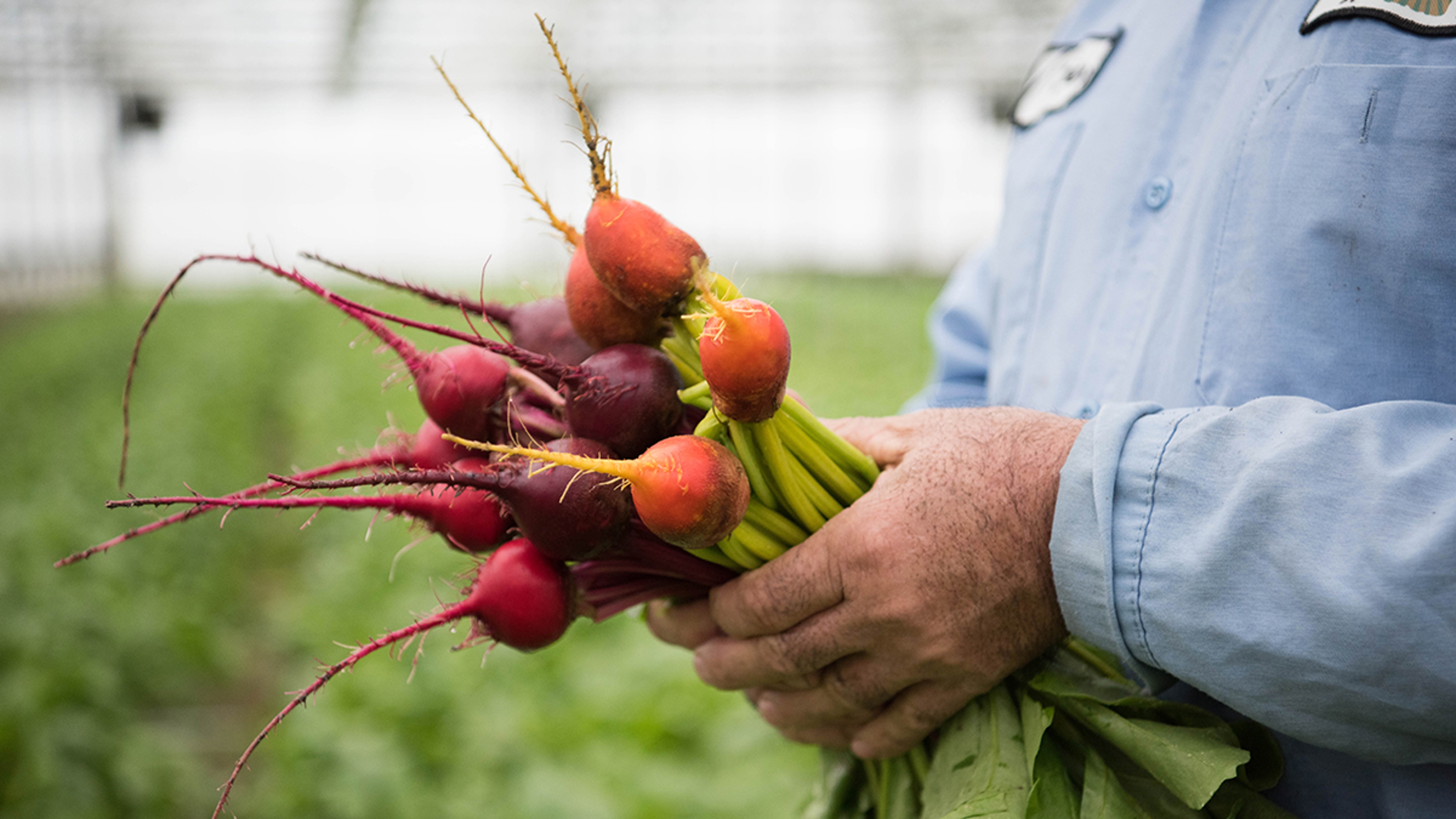
Besides their look and flavor, beets are packed with essential nutrients. "There are so many health benefits to adding beets to our diet," Farmer Lee says. "It's beautiful when food can be delicious and be good for us.
"Our beets taste so good," he boasts. "Folks can't believe what they've missed for 30 or 40 or 50 years!"
What makes Chef's Garden Candy Cane beets special?
"Let food be thy medicine, and medicine thy food," says Farmer Lee, quoting Hippocrates to tout the importance of adding a diverse array of vegetables, such as beets, to our diet.
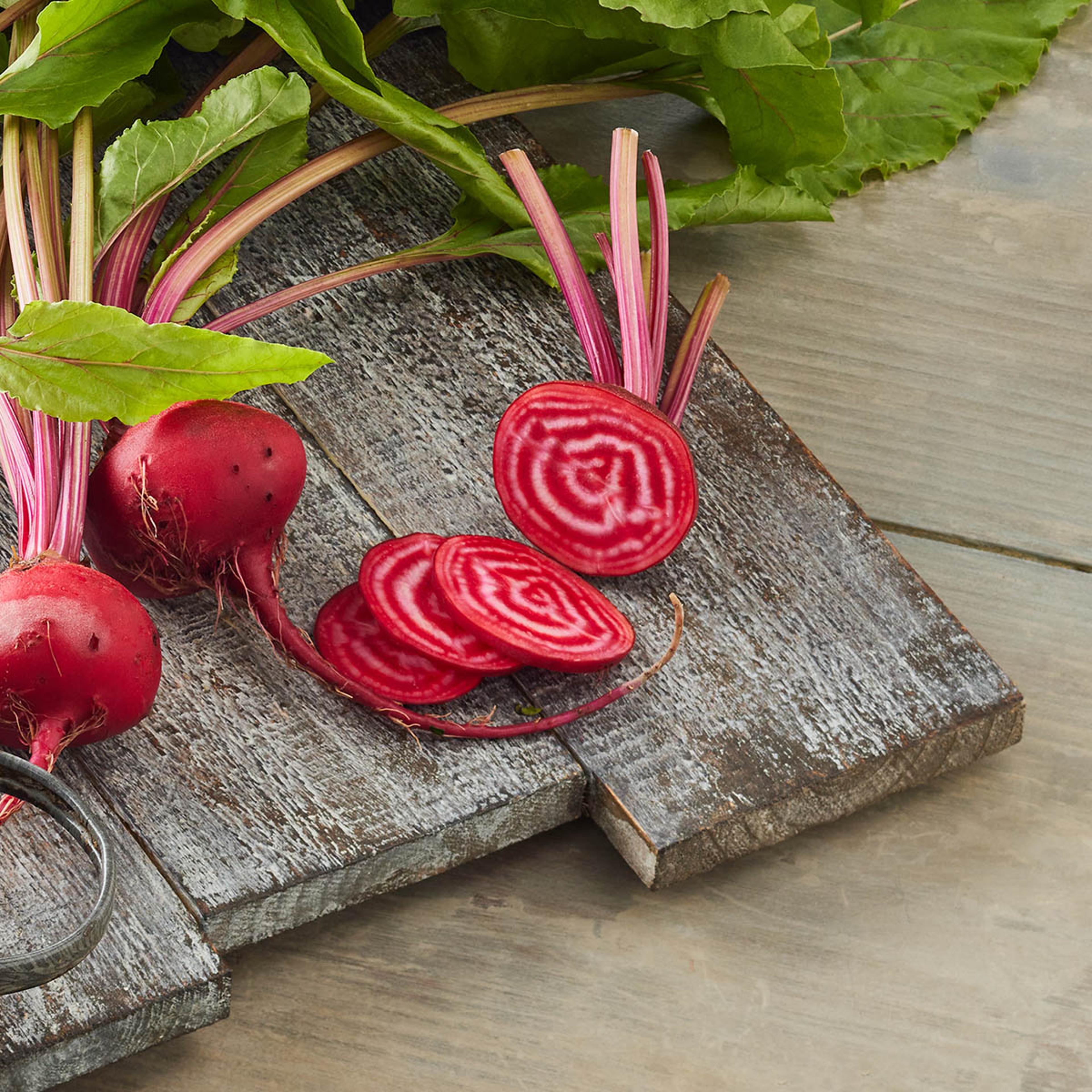
Beets are rich in vitamin C and B9 (folate), a crucial nutrient during pregnancy, and are high in naturally occurring nitrates that support healthy blood pressure. While the artificial nitrates added to cured and processed meats are linked to cancer, the naturally occurring nitrates found in vegetables, such as beets, celery, and leafy greens like spinach and kale, are linked to cancer prevention.
"When you eat a beet grown the right way — maximizing nutrition and flavor — they're truly like medicine for our body," Farmer Lee says.
How to care for and store beets
Select beets that are firm and heavy for their size. And if your beets have dirt on them, don't wash it off, advises Farmer Lee, since "dirt helps the beets hold longer." Cover beets with a damp paper towel to help them retain moisture — "they're 90% water" — and store them in an airtight container in the refrigerator for one to three months.
Beet greens, if still attached, should be brightly colored and fresh looking. Trim the beet greens off the beet, and thoroughly wash and dry before storing them in the refrigerator, where they will last three to five days.
How to use beets
Farmer Lee enjoys cooking a batch of candy cane beets with a drizzle of olive oil, salt, and cracks of pepper, to last the week, and has them as a side dish or in a salad with creamy goat cheese and crunchy walnuts.
Try a dish off the beet-en path and combine roasted beets with chickpeas for a luscious, jewel-toned beet hummus, make healthy beet chips, and use beet greens for pesto.
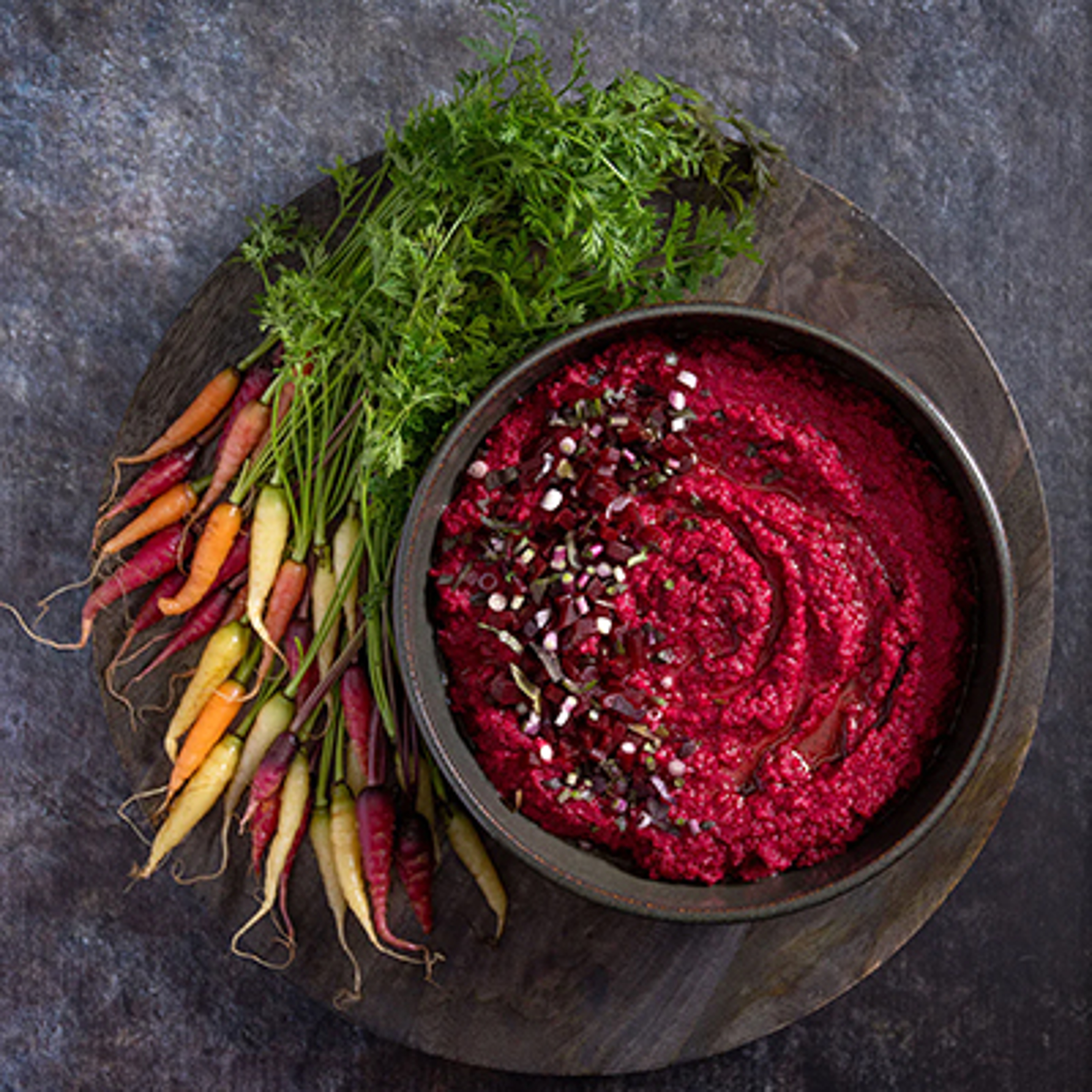
Since the signature stripes of candy cane beets disappear when steamed or boiled, you can showcase their colors by using a kitchen mandolin to thinly slice them and add raw beets to sandwiches and salads for beauty and crunch. Or roast them with a mélange of baby vegetables and enjoy with dip, or as a satisfying filling for vegetable tacos with celery root and mixed carrots.
READ MORE: Candy Cane Beets 5 Ways
A quick preparation that also retains beets' nutrients is to steam them until they are tender enough to pierce with a fork. Roasted and steamed beets shine solo with the simplicity of salt, pepper, olive oil, and herbs, or dressed in a spicy vinaigrette. Make a fennel salad with Cara Cara oranges and beets tossed with buttery Marcona almonds and goat cheese or a heartier Brussels sprouts and roasted beet salad.
"Beets are so simple to make," Farmer Lee says. "Get them on your table!"
.svg?q=70&width=384&auto=webp)















